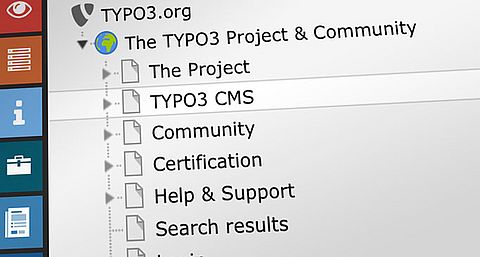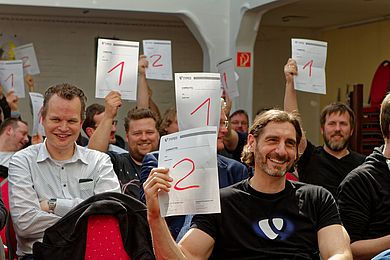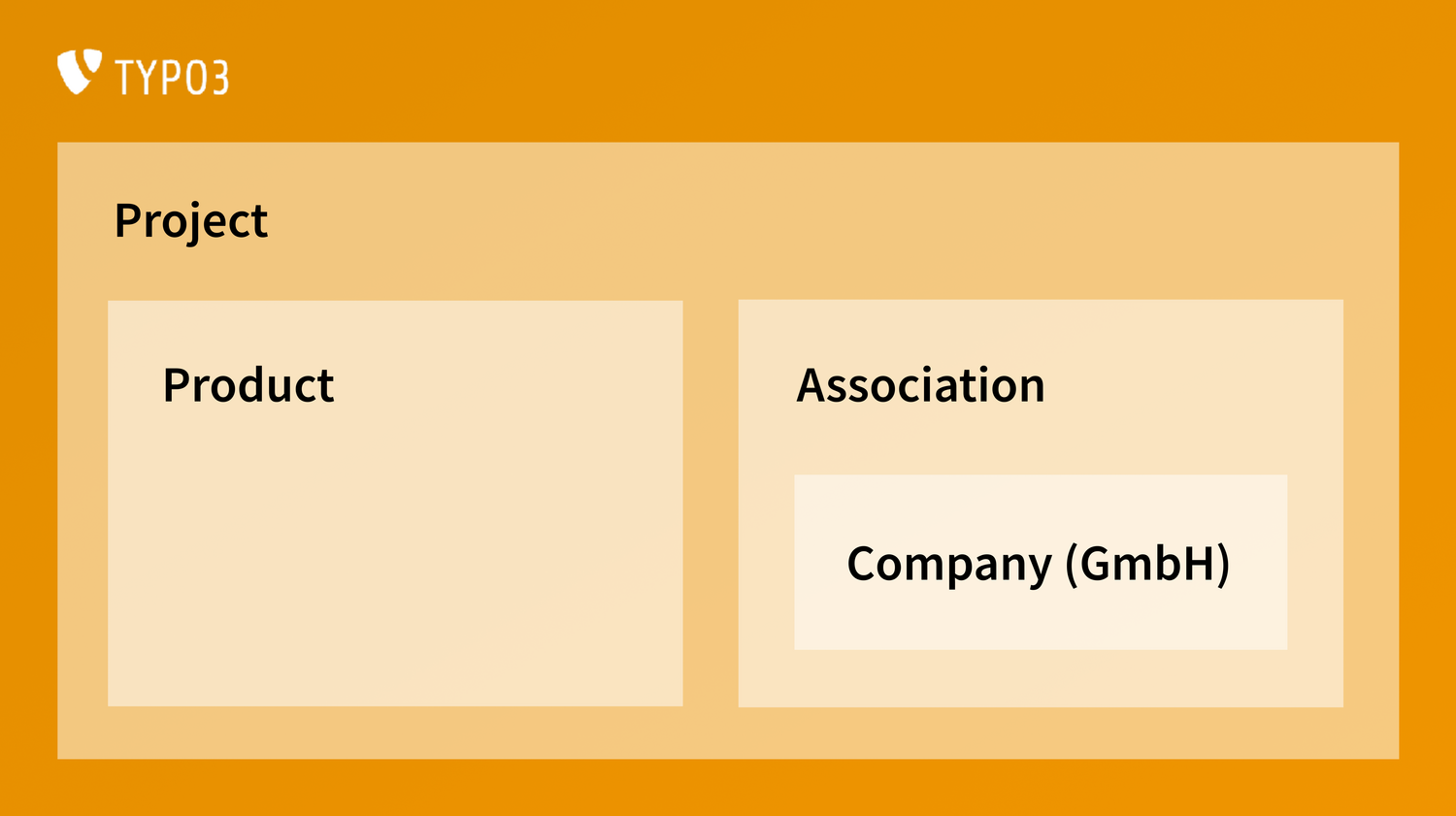5.4 — Strengthening the Innovation Process and Product Ownership
Historically, the further development of TYPO3 was often driven by a developer's vision and, as Kasper Skårhøj has said it: “[to] scratch your own itch”. As a result, some past development tasks were carried out multiple times and were not prioritized in a way that was comprehensible to end users. Developer happiness seemed to be the primary goal.
TYPO3 has a great opportunity to become more welcoming and beginner-friendly.
Therefore, the TYPO3 Association board sees the need to open up a transparent innovation process.
Let Us Learn to Innovate
One of the main goals for this innovation process is to develop a basic understanding and knowledge of how ideation, innovation, and product development should work. It is a must for Association bodies and leaders of committees and teams (especially those involved in product development for TYPO3 CMS), but we should also educate a wider audience, such as members of the TYPO3 Association and our community at large.
The members are an integral part of ongoing product and service development, and the sub goals are not nice-to-haves, but rather must-haves. Completing membership surveys could become a mandatory requirement to retain certain partnership and membership levels. The exact design, possible requirements, and non-compliance consequences will have to be defined.
To carry out the whole educational part of the ideation and innovation training, we see the role of an Innovation Manager arise in the TYPO3 GmbH.
A Standard and Transparent Process for Idea Development
As mentioned above, the innovation and development process of TYPO3 CMS and its surrounding services is only visible to the small number of people actively participating.
We believe the entire TYPO3 ecosystem will benefit from a change in this situation. We would like to clearly define the innovation process and increase the access to and involvement in it for users, developers, and TYPO3 Association members.
These are sub goals towards this goal:
- Establish Requirements Engineering techniques to identify basic needs, performance needs, and especially delighters for our products.
- Create a collection of Jobs-to-be-Done in a portfolio.
- Create a standard and easy process for collecting new ideas, especially from editors, end-customers, and other non-developers.
- Activate commercialization processes within the TYPO3 GmbH.
- Define a process to terminate projects and processes that are no longer helping us reach our goals.
- Implement the innovation process in the development cycles.
- Define faster maintenance and update cycles (e.g. overnight) that fulfill market expectations.
Further goals are:
- The establishment of innovation artifacts
- Creating space for innovation days, camps and hackathons
- Embracing innovative approaches and profiting from things we learned before.
- Establish innovation processes also outside of product-related items.
To reach these goals, we see the necessity of multiple and connected roles such as, TYPO3 Association Board members, the already mentioned Innovation Manager, and a possible Developer Relations Manager. These roles and persons should take part in regular, monthly stakeholder and decision-making meetings that should also provide insights from the TYPO3 community.
Implementation
Responsible: The board member responsible for the Product is responsible for the concept of the strategic goals and can assign tasks to the GmbH, BCC, teams, external support, etc. The person is also responsible for the exchange of information and communication to other stakeholders and external partners. The person will present the roadmap for the prioritized items in a board meeting. The person reports monthly to the rest of the board on the progress.
Action items for all board members: Each board member should read and understand the product strategy documents. The owner of the documents is the board member responsible for the Product
Controlling: The progress of the plan and achievements is reported in a board meeting, at least once per quarter. Responsible for controlling is the Board at large.





